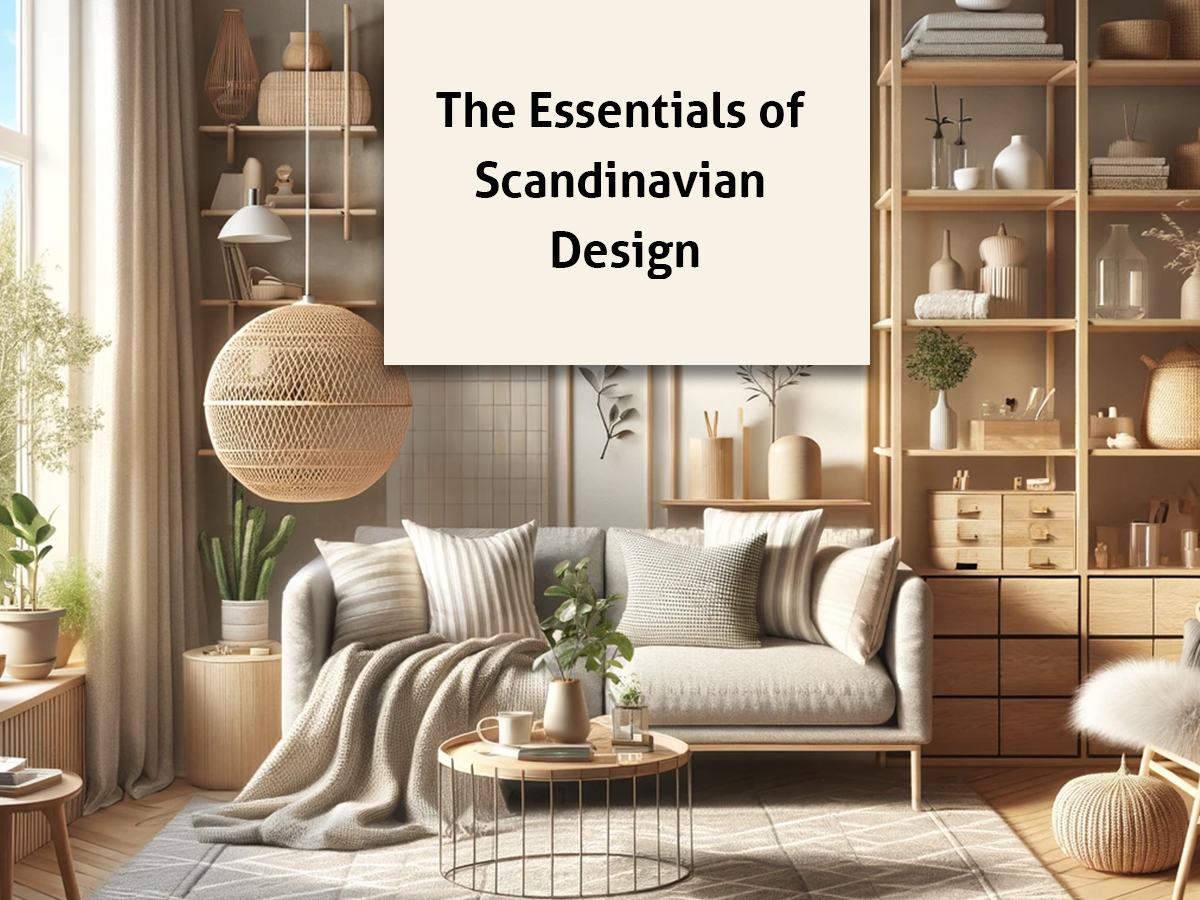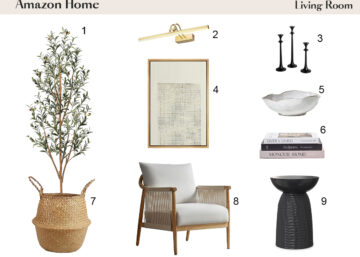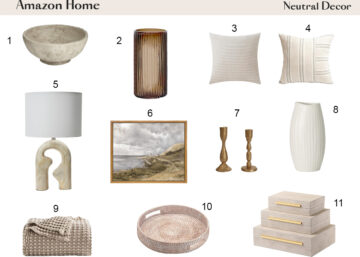The Essentials of Scandinavian Design: Simplicity and Functionality
Simplicity in Form and Function
In the realm of interior design, Scandinavian design stands out for its remarkable balance between simplicity and functionality. This section delves into the unique aspects of simplicity in form and function within Scandinavian design, shedding light on its profound impact on contemporary spaces.
Embracing Minimalism
Scandinavian design embodies the essence of minimalism, where less is truly more. It embraces clean lines, simple shapes, and uncluttered spaces, creating environments that exude a sense of calmness and tranquility. Unlike other design styles that may prioritize ornate details or excessive decoration, Scandinavian design celebrates the beauty of simplicity, allowing each element to shine in its own right.
Practicality as a Core Principle
At the heart of Scandinavian design lies a deep-rooted commitment to practicality and usability. Every piece of furniture, every fixture, and every design element is carefully selected and crafted to serve a specific purpose. This focus on functionality ensures that Scandinavian interiors not only look stunning but also enhance the quality of everyday life for occupants. From ergonomic seating to multifunctional storage solutions, each design element is thoughtfully integrated to optimize space and usability.
Blending Form and Function Seamlessly
One of the hallmarks of Scandinavian design is its seamless integration of form and function. While the design aesthetic may appear simple and understated, it is underpinned by a sophisticated understanding of how people interact with their environment. Scandinavian designers excel at marrying form and function, creating spaces that are both visually appealing and highly practical. This holistic approach to design ensures that every aspect of the interior contributes to the overall functionality and harmony of the space.
Harmony in Design
In Scandinavian design, simplicity and functionality go hand in hand to create a sense of harmony and balance. Each design element is carefully curated to complement the whole, resulting in spaces that feel cohesive and well-balanced. Whether it’s the clean lines of a minimalist chair or the efficient layout of a kitchen, every aspect of Scandinavian design is meticulously considered to ensure harmony in form and function.
The Role of 3D Renderings
In the process of conceptualizing and implementing Scandinavian design principles, 3D renderings play a crucial role in visualizing simplicity in form and function. By creating lifelike representations of spaces, designers can explore different design options, experiment with layouts, and fine-tune details to achieve the perfect balance between simplicity and functionality. 3D renderings provide clients with a clear understanding of how the design will look and function in real life, facilitating informed decision-making and ensuring that the final result aligns with their vision and needs.
Natural Elements and Materials
Scandinavian design draws heavily from nature, incorporating natural elements and materials to bring a sense of warmth, texture, and authenticity to interior spaces. This section explores the importance of natural elements and materials in Scandinavian design, highlighting their role in creating inviting and harmonious environments.
Celebrating Natural Light
Natural light is a central feature of Scandinavian interiors, with large windows and open floor plans designed to maximize its presence. By inviting abundant natural light into spaces, Scandinavian design creates an airy and uplifting atmosphere that reflects the beauty of the surrounding landscape. Natural light also enhances the visibility of natural materials, allowing them to shine and imparting a sense of serenity to the space.
Wood: The Heart of Scandinavian Design
Wood is perhaps the most iconic material in Scandinavian design, revered for its warmth, durability, and timeless appeal. From light-toned birch and pine to darker oak and walnut, Scandinavian interiors often feature a variety of wood species, each lending its unique character to the space. Whether used for flooring, furniture, or architectural details, wood adds a sense of organic beauty and connection to nature that is quintessentially Scandinavian.
Simplicity in Textiles
Textiles play a crucial role in softening the clean lines and minimalist aesthetic of Scandinavian interiors. From cozy wool throws to tactile linen cushions, Scandinavian textiles are characterized by their simplicity, functionality, and understated elegance. Neutral color palettes dominate, with subtle textures and patterns adding depth and interest to the space. By incorporating textiles made from natural fibers such as wool, cotton, and linen, Scandinavian design creates spaces that are both comfortable and inviting.
Bringing the Outdoors In
Scandinavian design blurs the boundaries between indoor and outdoor living, seamlessly integrating elements of nature into interior spaces. Indoor plants, such as fiddle-leaf figs, snake plants, and peace lilies, are commonly used to bring a touch of greenery and life to Scandinavian interiors. Their presence not only adds visual interest but also improves air quality and promotes a sense of well-being. By incorporating natural elements such as plants, stones, and botanical prints, Scandinavian design creates spaces that feel connected to the natural world, fostering a sense of harmony and tranquility.
Light and Airy Spaces
Scandinavian design is renowned for its emphasis on creating light and airy interiors that evoke a sense of serenity and tranquility. This section delves into the principles and techniques used to achieve this aesthetic, highlighting the importance of natural light, neutral color palettes, and strategic use of space.
Maximizing Natural Light
Natural light is a cornerstone of Scandinavian design, and spaces are carefully designed to maximize its presence. Large windows, minimal window treatments, and open floor plans are common features of Scandinavian interiors, allowing sunlight to flood the space and create a bright and welcoming atmosphere. By harnessing natural light, Scandinavian design celebrates the beauty of the changing seasons and connects occupants to the surrounding environment.
Neutral Color Palettes
Neutral color palettes are another hallmark of Scandinavian design, with shades of white, gray, and beige dominating interior spaces. These soft, muted tones serve as the perfect backdrop for natural light, allowing it to bounce off walls and surfaces and illuminate the space. Neutral colors also create a sense of cohesion and harmony, making it easy to layer textures and introduce pops of color through accessories and decor. By sticking to a neutral color palette, Scandinavian interiors feel timeless, elegant, and effortlessly chic.
Minimalist Furnishings
In Scandinavian design, less is often more when it comes to furnishings. Minimalist furniture with clean lines and simple forms takes center stage, allowing the architecture and natural light to shine. Pieces are chosen for their functionality and versatility, with an emphasis on quality craftsmanship and enduring design. By keeping furnishings pared back and clutter-free, Scandinavian interiors feel spacious, uncluttered, and conducive to relaxation and contemplation.
Strategic Use of Space
Scandinavian design is characterized by its efficient use of space, with every square foot thoughtfully considered and optimized for functionality and aesthetics. Multi-functional furniture, built-in storage solutions, and open shelving are common features of Scandinavian interiors, helping to maximize usable space while maintaining a sense of openness and flow. By embracing a less-is-more approach to design, Scandinavian spaces feel light, airy, and effortlessly livable.
Minimalist Decor and Furnishings
In Scandinavian design, the concept of minimalism extends beyond just the architecture and layout of a space—it also encompasses the decor and furnishings within it. This section explores the principles of minimalist decor and furnishings in Scandinavian design, highlighting the importance of simplicity, functionality, and craftsmanship.
Simplicity in Design
At the heart of minimalist decor and furnishings is the principle of simplicity. Scandinavian interiors are characterized by clean lines, sleek silhouettes, and uncluttered spaces. Furniture and decor pieces are stripped down to their essential elements, with unnecessary ornamentation and embellishment kept to a minimum. By embracing simplicity in design, Scandinavian interiors exude a sense of calm, balance, and understated elegance.
Functionality and Versatility
While minimalist decor may appear simple, it is also highly functional and versatile. Every piece of furniture and decor serves a purpose, whether it’s providing seating, storage, or lighting. Scandinavian designers prioritize utility and practicality, opting for furnishings that are not only beautiful but also serve multiple functions. For example, a coffee table may double as a storage unit, or a pendant light may also serve as a sculptural statement piece. This focus on functionality ensures that Scandinavian interiors are not only aesthetically pleasing but also highly livable and efficient.
Quality Craftsmanship
In Scandinavian design, quality craftsmanship is paramount. Minimalist decor and furnishings are built to last, with an emphasis on durability, longevity, and attention to detail. Materials such as solid wood, natural fibers, and high-quality textiles are commonly used, imbuing each piece with a sense of warmth and tactility. Scandinavian furniture is known for its impeccable construction and timeless design, making it a worthwhile investment for homeowners seeking to create a space that will stand the test of time.
Subtle Textures and Finishes
While minimalist decor may favor simplicity, it also incorporates subtle textures and finishes to add visual interest and depth to a space. Textiles such as wool, linen, and sheepskin are often used to introduce softness and warmth, while natural wood finishes bring a sense of organic beauty to furniture and flooring. By layering textures and finishes, Scandinavian interiors feel inviting, tactile, and full of character, despite their minimalist aesthetic.
Embracing Negative Space
In Scandinavian design, negative space plays a crucial role in creating a sense of balance and harmony. Minimalist decor and furnishings are thoughtfully arranged to allow for ample breathing room, with careful consideration given to the placement of each piece. By embracing negative space, Scandinavian interiors feel open, uncluttered, and serene, allowing occupants to fully appreciate the beauty of their surroundings.
Integration of Functional Design Solutions
In Scandinavian design, form follows function—an ethos that extends to every aspect of interior design, including the integration of functional solutions. This section explores how functional design solutions are seamlessly integrated into Scandinavian interiors to enhance usability, organization, and efficiency.
Versatile Storage Solutions
One hallmark of Scandinavian design is its emphasis on practical storage solutions that maximize space and minimize clutter. From built-in shelving units to modular storage systems, Scandinavian interiors prioritize versatility and efficiency when it comes to storage. Cabinets, drawers, and hidden compartments are seamlessly integrated into furniture pieces and architectural elements, allowing homeowners to keep belongings neatly tucked away while maintaining a clean and uncluttered aesthetic.
Multi-Functional Furniture
Scandinavian design celebrates the versatility of furniture, with many pieces serving multiple purposes to accommodate diverse lifestyles and spatial constraints. For example, a sofa may feature built-in storage compartments or a pull-out bed for overnight guests, while a dining table may extend to accommodate larger gatherings. By investing in multi-functional furniture, homeowners can optimize their living spaces without sacrificing style or comfort, making every square foot count.
Efficient Layouts and Spatial Planning
Efficient layouts and spatial planning are fundamental to Scandinavian design, with careful consideration given to the flow and functionality of each space. Open floor plans, ample natural light, and strategic furniture arrangements contribute to a sense of openness and fluidity, while thoughtful zoning ensures that each area serves its intended purpose. Whether it’s a compact studio apartment or a spacious family home, Scandinavian interiors are designed to maximize usability and comfort without compromising on style.
Innovative Kitchen and Bathroom Solutions
The kitchen and bathroom are two areas where functional design solutions are especially crucial. In Scandinavian kitchens, ergonomic layouts, streamlined cabinetry, and integrated appliances optimize workflow and organization, while durable materials ensure longevity and ease of maintenance. Similarly, Scandinavian bathrooms prioritize efficiency and comfort, with features such as wall-mounted vanities, walk-in showers, and smart storage solutions enhancing usability and visual appeal.
Seamless Integration of Technology
While Scandinavian design celebrates simplicity and minimalism, it also embraces the seamless integration of technology to enhance everyday living. From smart home automation systems to energy-efficient appliances, Scandinavian interiors leverage technology to improve comfort, convenience, and sustainability. However, technology is thoughtfully integrated into the design to complement rather than overshadow the overall aesthetic, ensuring a harmonious balance between form and function.
Sustainability and Environmental Consciousness
In recent years, sustainability has become increasingly important in interior design, and Scandinavian design is no exception. This section explores how sustainability and environmental consciousness are integral components of Scandinavian interiors, aligning with the values of Elemental Viz and resonating with its target audience.
Embracing Eco-Friendly Materials
One of the defining characteristics of Scandinavian design is its use of natural materials that are both sustainable and eco-friendly. From locally sourced wood to organic textiles, Scandinavian interiors prioritize materials that have minimal impact on the environment. These materials not only lend warmth and texture to spaces but also promote a sense of connection to nature, a core tenet of Scandinavian design philosophy.
Minimalist Approach to Consumption
At the heart of Scandinavian design is a minimalist approach to consumption, which emphasizes quality over quantity and encourages thoughtful purchasing decisions. Rather than chasing trends or accumulating excess belongings, Scandinavian interiors focus on simplicity, functionality, and longevity. By investing in well-made, timeless pieces that are built to last, homeowners can reduce their environmental footprint and create spaces that stand the test of time.
Energy-Efficient Design Practices
Scandinavian design places a strong emphasis on energy efficiency and sustainable building practices, reflecting Elemental Viz’s commitment to environmentally conscious design solutions. From passive solar design principles to high-performance insulation, Scandinavian homes are designed to minimize energy consumption and reduce reliance on fossil fuels. By optimizing natural light, ventilation, and thermal performance, these homes not only minimize their environmental impact but also enhance comfort and well-being for occupants.
Promoting Circular Economy
Scandinavian design embraces the concept of a circular economy, where products and materials are reused, repurposed, and recycled to minimize waste and maximize resource efficiency. Whether it’s upcycling vintage furniture, repurposing reclaimed materials, or investing in modular designs that can be easily disassembled and reconfigured, Scandinavian interiors embody a holistic approach to sustainability that extends beyond aesthetics to encompass the entire lifecycle of products and materials.
Conclusion: Embracing Scandinavian Design Principles
In wrapping up our exploration of Scandinavian design principles, it’s evident that these concepts offer a profound impact on interior spaces, transcending mere aesthetics to foster functional, inviting environments.
Timeless Elegance and Functionality
Scandinavian design’s enduring allure lies in its fusion of timeless elegance and practical functionality. By emphasizing simplicity, minimalism, and the use of natural elements, it creates spaces that are both visually appealing and conducive to daily living.
Promoting Well-being and Comfort
Through its emphasis on light, space, and organic materials, Scandinavian design contributes to enhanced well-being and comfort within interiors. Its focus on creating serene, harmonious spaces supports relaxation and rejuvenation, promoting a sense of tranquility and balance.
Environmental Consciousness
Scandinavian design’s emphasis on sustainability aligns with growing environmental concerns. By prioritizing eco-friendly materials and energy-efficient solutions, it champions responsible design practices that minimize environmental impact and promote a healthier planet.
Empowering Personal Expression
Ultimately, Scandinavian design empowers individuals to personalize their spaces while adhering to timeless design principles. Whether through thoughtful furniture choices, strategic layout planning, or mindful use of color and texture, it allows for the expression of individual style within a cohesive framework.
Looking Forward: A Continued Influence
As we look ahead, Scandinavian design is poised to maintain its influence in the world of interior design. Its blend of elegance, functionality, and sustainability resonates with a diverse range of individuals seeking spaces that are not only beautiful but also practical and environmentally conscious.








